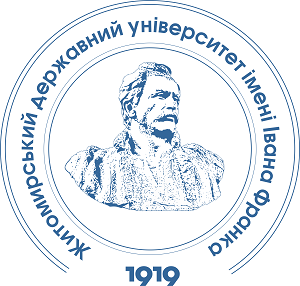SOIL REHABILITATION POTENTIAL OF OIL RADISH FOR ITS GREEN MANURE USE FROM THE POINT OF VIEW OF RESTORATION OF BASIC AGROPHYSICAL PROPERTIES
DOI:
https://doi.org/10.32782/naturaljournal.10.2024.17Keywords:
agrophysical degradation of soil, density, porosity, soil structure, green manureAbstract
It is noted that the use of soil rehabilitation technologies is relevant for Ukraine, given the intensity and sustainability of the development of degradation processes of soil cover, especially in terms of agrophysical degradation caused by soil disintegration and overcompaction, loss of useful porosity. Such trends ultimately pose a threat to the preservation of agricultural landscapes and the formation of the foundations of food security. Over a five-year period (2019–2024), the effectiveness and feasibility of using oilseed radish as a green manure crop in the variant of summer (intermediate) green manure use with a stable four-year cycle was assessed in order to study the nature of the impact of such an agrotechnological solution on the formation of basic agrophysical soil parameters on the test site of gray forest soils with an average level of initial agrophysical degradation. According to the results of the research, a favorable hydrothermal regime of the territories of the Right- Bank Forest-Steppe of Ukraine of the gray forest soil zone was determined to ensure the processes of mineralization of green manure and the formation of a positive resulting effect on the basic agrophysical parameters of the soil. The expediency of the summer green manure variant using oilseed radish leaf and stem mass with a period of at least 4 years to increase the share of agronomically valuable fraction of soil aggregates by at least 6.9% while reducing the share of cloddy fraction by at least 3.2%, reducing soil density by 6.9%, increasing aeration porosity by 7.3%, while increasing the total porosity by 10.0% was established. The resulting positive effect of the use of oil radish as a green manure on the overall structure of soil aggregates against the background of a significant decrease in the proportion of aggregates with a lumpy outline and the formation of an optimal dispersed soil surface with an increase in the soil structure coefficient in the range of 0.36–0.54 was also established.
References
Балюк С.А., Медведєв В.В. Стратегія збалансованого використання, відтворення і управління ґрунтовими ресурсами України. К. : Аграрна наука. 2012. 239 с.
Балюк С.А., Медведєв В.В., Воротинцева Л.І., Шимель В.В. Сучасні проблеми деградації ґрунтів і заходи щодо досягнення нейтрального її рівня. Вісник аграрної науки. 2017. № 8. С. 5–11.
Булигін С.Ю., Вітвіцький С.В., Буланий О.В., Тонха О.Л. Моніторинг якості ґрунтів. К.: Видавництво НУБіП України, 2019. 421 с.
Гаськевич В.Г., Папіш І.Я., Телегуз О.Г. Фізика ґрунтів. Лабораторний практикум. Навчальний посібник. Львів : ЛНУ імені Івана Франка, 2021. 170 с.
ДСТУ ISO 11277:2005. Якість ґрунту. Визначення гранулометричного складу мінерального матеріалу ґрунту. Метод просіювання та седиментації (ISO 11277:1998, IDT). 2005. 32 c.
Зайцев Ю., Кирильчук А., Ослопова М. Побічна продукція як елемент біологізації землеробства ґрунтів Київської області. Вісник Сумського національного аграрного університету. Серія: Агрономія та біологія. 2022. Вип. 2 (48). С. 63–68.
Іванишин В.В., Роїк М.В., Шувар І.А., Центило Л.В., Сендецький В.М., Бунчак О.М., Колісник Н.М. Біологізація землеробства в Україні: реалії та перспективи: науково-виробниче видання. Івано-Франківськ : Симфонія форте, 2016. 284 с.
Іванишин В.В., Шувар І.А., Бахмат М.І., Сендецький В.М., Танчик С.П., Центило Л.В., Бунчак О.М., Мельничук Т.В. Солома, післяжнивні рештки і сидерати – агротехнологічні елементи біологізації сучасного землеробства: монографія / за заг. ред. І.А. Шувара, В.М. Сендецького. Івано-Франківськ : Симфонія форте, 2020. 292 с.
Медведєв В.В., Пліско І.В. Критерії і нормативи фізичної деградації орних ґрунтів (пропозиції до вдосконалення нормативної бази). Вісник аграрної науки. 2017. № 3. С. 11–17.
Медведєв В.В., Пліско І.В., Крилач С.І., Накісько С.Г., Уваренко К.Ю. Фізична деградація орних ґрунтів України (оцінювання, профілактика, призупинення). Харків : ННЦ «Інститут ґрунтознавства та агрохімії імені О. Н. Соколовського», 2020. 110 с.
Панченко А.Н. Теорія подрібнення ґрунту ґрунтообробними робочими органами. Дніпропетровськ, 1999. 139 р.
Проєкт Плану відновлення України. Матеріали робочої групи «Екологічна безпека». Національна рада з відновлення України від наслідків війни. 2022. [Електронний ресурс]. URL: https://www.kmu.gov.ua/storage/app/sites/1/recoveryrada/ua/environmental-safety-assembly.pdf (дата звернення 25.10.2024).
Стрілець І.Ю. Концептуальні напрями вдосконалення системи охорони земель сільськогосподарського призначення та відтворення родючості ґрунтів: український та зарубіжний аспект. Проблеми сучасних трансформацій. Серія: право, публічне управління та адміністрування. 2022. № 6. [Електронний ресурс]. URL: https://reicst.com.ua/pmtl/article/view/2022-6-01-17 (дата звернення 26.10.2024).
Трускавецький Р.С., Цапко Ю.Л. Основи управління родючістю ґрунтів. Харків, 2016. 388 с.
Цицюра Я.Г., Неїлик М.М., Дідур І.М., Поліщук М.І. Сидерація як базова складова біологізації сучасних систем землеробства. Монографія. Вінниця : Видавець ТОВ «Друк», 2022. 770 с.
Шувар І.А. Сидерати в сучасному землеробстві. Івано-Франківськ : Симфонія форте, 2015. 156 с.
Fan Z.L., Chai Q., Cao W.D., Yu A.Z., Zhao C., Xie J.H., Yin W., Hu F.L. Ecosystem service function of green manure and its application in dryland agriculture of China. Ying Yong Sheng Tai Xue Bao. 2020. Vol. 31. № 4. P. 1389–1402.
Fanish S.A. Impact of Green Manure Incorporation on Soil Properties and Crop Growth Environment: A Review. World Journal of Agricultural Sciences. 2017. Vol. 13. № 3. P. 122–132.
Kazakou E., Violle C., Roumet C., Pintor C., Gimenez O., Garnier E. Litter quality and decomposability of species from a Mediterranean succession depend on leaf traits but not on nitrogen supply. Annals of Botany. 2009. Vol. 104. №. 6. P. 1151–1161.
Lei B., Wang J., Yao H. Ecological and Environmental Benefits of Planting Green Manure in Paddy Fields. Agriculture. 2022. Vol. 12 (2). P. 223.
Patra A., Singh R.P., Kundu M.S., Kumar G., Malkani P., Singh B.K., Choudhury S., Kundu A., Mukherjee S. Green Manuring: A Sustainable Approach for Soil Health Improvement. Agricultural and food: E-Newsletter. 2023. Vol. 5. №. 4. P. 198–201.
Qaswar M., Huang J., Ahmed W., Li D., Liu S., Ali S., Liu K., Xu Y., Zhang L., Liu L. Long-Term Green Manure Rotations Improve Soil Biochemical Properties, Yield Sustainability and Nutrient Balances in Acidic Paddy Soil under a Rice-Based Cropping System. Agronomy. 2019. Vol. 9. № 12. P. 780.
Quintarelli V., Radicetti E., Allevato E., Stazi S.R., Haider G., Abideen Z., Bibi S., Jamal A., Mancinelli R. Cover Crops for Sustainable Cropping Systems: A Review. Agriculture. 2022. Vol. 12. P. 2076.
Ramirez-Garcia J., Gabriel J.L., Alonso-Ayuso M., Quemada M. Quantitative characterization of five cover crop species. The Journal of Agricultural Science. 2015. Vol. 153. № 7. Р. 1174–1185.
Sharma P., Singh A., Kahlon C.S., Brar A.S., Grover K., Dia M., Steiner R.L. The Role of Cover Crops towards Sustainable Soil Health and Agriculture – A Review Paper. American Journal of Plant Sciences. 2018. Vol. 09. P. 1935–1951.
Stähly S., Friedrich H., Detert M. Size ratio of fluvial grains’ intermediate axes assessed by image processing and square-hole sieving. Journal of Hydraulic Engineering. 2017. Vol. 143. P. 1–6.
Ugrenović V., Filipović, V., Jevremović, S., Marjanović J.A., Popović, V., Buntić A., Delić, D. Effect of Brassicaceae as cover crops. Selekcija i semenarstvo. 2019. Vol. 25. № 2. Р. 1–8.
Wong J. Handbook of statistical analysis and data mining applications. Cambridge, Academic Press, 2018. 589 p.






